In this week’s newsletter
Interview with Mitch Calvert. Weight loss vs inches loss. Chasing pavements. Calorie cycling approach to nutrition. Progress after a pandemic. Diet doesn’t have to be “all-or-nothing”.
Editor’s Corner

Mitch Tulloch is the Senior Editor of FitITproNews and a recovering fat IT pro who lost 50 lbs in midlife and is now on his way to becoming a fit IT pro. Mitch is a widely recognized expert on Windows Server and cloud technologies who has authored or been Series Editor of numerous books/ebooks from Microsoft Press. Mitch is also the Senior Editor of WServerNews and writes frequently for TechGenix.
Hey everyone, hope you’re all doing well health-wise as the summer progresses and not letting yourself get so stressed out you start overeating again or skipping out on doing workouts! The last few months have certainly been stressful for many of us, but don’t let that be an excuse to reverse the transformation you’ve been working on and go from being an aspiring fit IT pro back to being a proverbial fat IT pro 🙂
I’ve just had an especially stressful few weeks myself, and when I weighed myself yesterday I discovered I had put on six pounds, yikes! And I also reviewed my workout log and found I’d only exercised three days in the last two weeks because of the heavy workload I’ve been dealing with.
What should one do in this kind of situation? There’s only one thing you can do and that’s to get back on track again. So I’m watching my food intake again and have restarted my weightlifting workouts — not to punish myself for having slipped by drastically cutting my caloric intake or ramping up exercise intensively — but simply to get back to what had been working well for me as far as weight maintenance and strength-building are concerned. I’m hopeful that by simply doing things that work well for me I’ll quickly shed those extra pounds I’ve put on.
What’s inside this issue of FitITproNews
We have lots of great stuff for you to read in this issue of FitITproNews. First off is my interview with Mitch Calvert who lives here in my home city of Winnipeg, Canada. Mitch lost 60 lbs and has not only managed to keep it off but has also become a successful fitness coach who helps others make the journey from fat to fit. Next comes Robin Camp who wisely warns us about the danger of focusing too much on our weight as a measure of our progress in becoming fit IT pros. Then Kris Lall weighs the pros and cons of running on hard vs. soft surfaces while Kris Kane dispels the illusion that you have to eat the same number of calories every single day to succeed in losing weight and becoming fit. Lana Khazari describes how the COVID-19 lockdown has taught her how effective and affordable it can be to work out at home, and Sarah Trammell explains why eating a healthy diet doesn’t have to mean only eating rabbit food. Several of our other regular columnists are overwhelmed with their work right now but we hope they’ll be able to rejoin us soon. And BTW if you’re an IT pro or dev who is into fitness or has lost weight and managed to keep it off though sound nutrition and exercise, why not share your experience and expertise with the 180k subscribers to our newsletter so they also can benefit? Email us at [email protected] if you’re interested!
Enjoy this week’s issue of FitITproNews and feel free to send us feedback on any of the topics we’ve covered — we love hearing from our readers!
Cheers!
Mitch Tulloch, Senior Editor
Interview with Mitch Calvert (Mitch Tulloch)
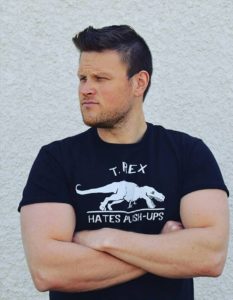
Mitch Calvert provides an online fitness coaching program that’s aimed at helping individuals look, feel and perform their best in as little time as possible. As a former 250 lb chubby guy, Mitch’s journey is one anybody can duplicate with a smart, focused program and effort. The following is the text of an interview I recently did with Mitch.
Mitch let’s start by having you tell us a little about yourself and why you’re so passionate about fitness.
MITCH: I’ve been obsessed with fitness since losing 60 pounds in 2003 and have spent the last 8 years working as a coach myself. I’d be naive to think all of this was of my own creation. Most of it was influenced by past mentors, educational programs and anecdotal results tweaking and working with people over the years.
I was intrigued by your Diet Cheat Sheet which I downloaded from your website and its list of suggestions for losing weight, most of which I agree with. Why do you recommend not consuming any food until two hours after you’ve woken up? That’s something I usually do myself by skipping breakfast, though I usually eat a banana before I begin my workout.
This is one of shortcomings of a free nutrition guide – every BODY (emphasis on body :P) is different. But this cheat sheet is designed to get some quick wins and a few pounds off. What this strategy does is get them used to a bit of hunger, which is something people rarely let themselves experience with today’s easy access to snack foods and food delivery at our fingertips. It also creates a calorie buffer for later meals along the same lines intermittent fasting works. It’s not magic, but it’s hard to over-eat your day’s worth of calories in 2 sit-down meals vs. 3.
What’s the deal about avoiding eating any carbs during your first sit down meal of the day? Doesn’t that make it harder to recover if your first meal is post-workout?
Same point above applies 🙂 The strategy would change if someone does a hard workout first thing in the AM, but this is general guidance for the average person who sits at a desk to start the day. I’ve found if someone doesn’t workout first thing, that holding off on carbs a breakfast gives you more mental focus and clarity. Try it for yourself and see! (After the initial day or two adaptation period required)
I like what you say about making sure each meal include at least 1 or 2 portions of protein. Why is consuming lots of protein like this important?
It plays an important role when aiming to lose FAT, not just WEIGHT.
It helps you maintain lean body mass as you diet down. That’s why scale weight is not the only measurement of success.
A high protein intake may help prevent muscle loss when daily calories are reduced for weight loss, so you don’t throw out the baby (muscle) with the bath water (fat).
It also has a high TEF — or Thermic Effect of Food. Meaning that as much as 20-30% of the calories from protein are “burned off” just to digest the protein, compared to carbs (5-10%) and fat (0-3%). So a calorie of carbs or fats isn’t equal to a calorie of protein. It’s a more satiating macronutrient overall.
Having a serving or two of veggies with every meal is also a terrific idea. What about fruit?
Fruit is great – as long as you account for the calories in your overall daily intake. You can gain weight eating healthy foods if your consumption is too high, just like you can lose weight eating nothing but Twinkies if calories are restricted (google Mark Haub to see the professor who did this… I don’t advise it though!)
You mention 45 minutes as a kind of sweet spot for the duration of a strength training workout. I’ve actually found by trial and error that 45 minutes is about all the gas I have in my tank when I’m lifting barbells.
Yeah, that’s sorta how I came to this conclusion. Seeing how myself and clients respond to the demands of a workout, factoring in recovery and sense of well being coming out of it. The average joe with a career and family needs to get the most bang for their buck. Less is more in most cases. There are some negative hormonal adaptations to prolonged workouts, but that’s majoring in the minors on this one.
Is strength training (e.g. lifting barbells) the most important kind of exercise to do if your goal is losing weight? What about all those skinny-ass runners out there? <grin>
It is, but not for the reasons your local high-intensity gym class would think.
Fat Loss is about losing fat and keeping muscle.
How do you keep muscle?
Strength training (and protein matters as above, but let’s focus on exercise in this answer!)
By strength training and getting stronger, challenging your muscles with real weight, you essentially tell your body you need that muscle while you’re in a calorie deficit.
That way the body burns fat for fuel because it knows you need the muscle.
It doesn’t know you’re working out to look better and feel better, it just knows you’re using the muscle so it better keep it to meet the demands.
The body is highly adaptable.
It’s why long distance runners will lose muscle (because the body perceives muscle as dead weight to run that long)
Back in the stone age, the body would have adapted the same way to help humans do the work or heavy lifting needed to stay alive and build things.
It’s just science.
So, here’s the equation for fat loss:
Calorie Deficit through diet and general movement (Weight Loss) + Strength Training (Keep The Muscle) = Fat Loss.
I have a hard time with your suggestion about fasting twice a week. Strength training really drives up my appetite, and if I don’t keep eating on rest days I have problems recovering and can even get sick.
I’d first ask you what is your goal? This free cheat sheet is just a starting point with general recommendations. My aim with this is quick, aggressive fat loss for a week or two to give folks a taste of what’s required. I’m a fan of fasting for some, but those who train hard regularly, or have active day jobs, should not implement it. It’s not a magic fix it solution for all, but it can be effective.
Limiting alcohol to three drinks a day sounds smart. But it sounds like you prefer beer or mixed drinks — what about red wine? Isn’t it supposed to be healthy for you?
Red wine is fine, but it’s not the elixir of long term health. Resveratrol might be a key ingredient that makes red wine heart healthy, but I wouldn’t drink it for that reason (you’d have to drink a lot to get a significant dose – and excessive alcohol out-weighs the potential benefits LOL!). Everything in moderation is the take-home here.
What are your current fitness goals these days? And what does a typical Mitch Calvert workout look like?
I’ve experienced a lot of business growth in 2019-20 and have two little girls at home, so my fitness is in a bit of maintenance phase. I have an approach “10M Muscle” which is a strength training alternative to Tabata or group fitness classes where we get the max recoverable volume for each muscle group in 10 minutes (there’s options for extending it longer, but if it’s all you’ve got, we can do a lot with it with only a pair of dumbbells and your own body). Stimulate the muscle, don’t annihilate, but far more effective than the jumping around craziness those classes tend to encourage.
Anything more you’d like to say to our readers, many of whom are “recovering fat IT pros” like myself? <grin>
I’ve been there. I was 260 pounds in my early 20s and finding fitness quite literally saved my life.
The truth is you can’t be a fit, healthy person with the habits of someone who isn’t though. I’d encourage you to download the free cheat sheet at www.mitchcalvert.com (the one we discussed here!) but reach out with any questions about your specific situation so it can be modified to your needs some. My 90 day Belly Burn Blueprint re-opens in mid July, which is a coaching program that helps busy professionals lose up to 30 pounds and 2 pant sizes in 90 days without living in the gym or soul-crushing crash diets.
Mitch thanks very much for giving us some of your valuable time!
Thanks for the opportunity to share my message.
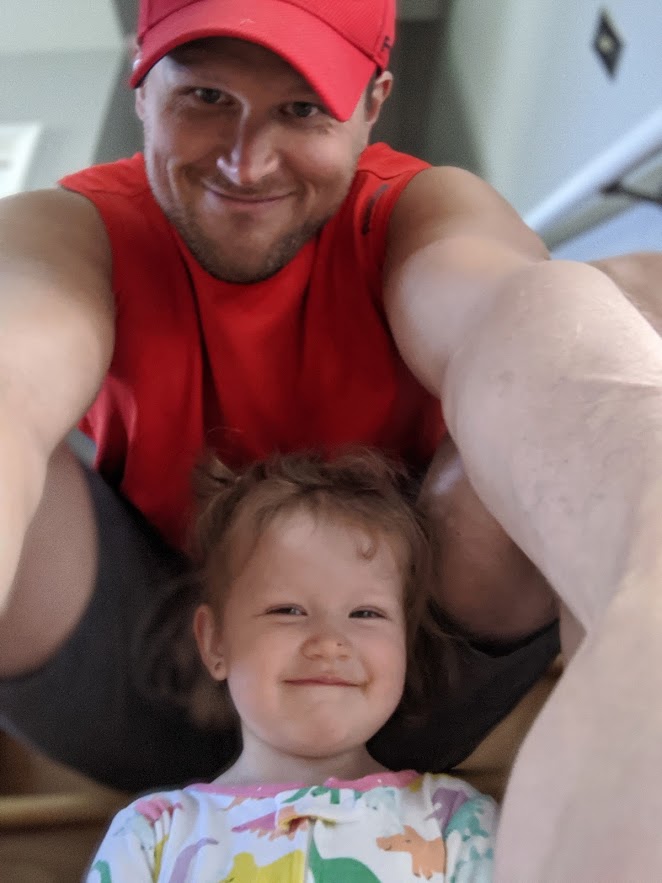
Weight loss vs inches loss (Robin Camp)
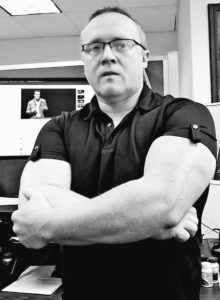
Robin Camp works as tech support for an Orthodontic Practice Management Software company called New Horizons Software ( www.nhsoftware.com). As a professional photographer on the side, Robin does fashion, glamour weddings and more in his spare time (www.dancingwithlightphoto.com). You can also now find him working out on Instagram at https://www.instagram.com/fitittech/.
One of the most frustrating aspects of getting into shape comes from focusing too much on weight loss. It makes sense from a simple point of view, we want to get leaner which equals weight loss right? Not necessarily. Usually, you will lose weight at first, however at some point you are going to build muscle, which is denser than body fat. So what does this mean?
The scale is a good tool, but you have to use your eyes too. You may be “putting on weight” but how are your pants fitting? You may find that all though the scale says you are gaining weight, the fact that you no longer have to suck in your stomach to fasten your pants says you are getting leaner.
So remember to use the scale as a measuring tool sparingly, pay attention to clothes fitting, your energy level etc., these are more important aspects of the improved health that fitness will bring you then what the scale says.
To put this in perspective and point out just how ridiculously the scale can mislead us- At 17 years old competing in bodybuilding, I had gotten down to 6% body fat, everything rippled and I could run for miles without getting winded, yet according to the BMI (Body Mass Index) charts in the doctor’s office I was “morbidly obese” at 182 lbs. Height Weight indexes do not take into account muscle density, labeling many athletes as obese. I point this out because I see many people show up for a new exercise program and get excited as they lose weight, and frustrated when they start “gaining”.
Increased muscle density not only improves your metabolism, it will help boost your energy levels, allows you to fit into those pants easier, decreases the likelihood of multiple diseases and most importantly, raises your self-confidence when you realize the changes you have made.
Pay attention to other queues to, one of the most satisfying for me when I first started working out again was having more energy, simply being able to go up and down the stairs without being winded, having the energy to take that hike that I had wanted etc.
Fitness is the ultimate control freaks tool, you can shape your body, it’s not as easy as the late night infomercials make it look, but it is possible and the satisfaction of reaching your goals and knowing that YOU did that is immensely satisfying.
“When there is no enemy within, the enemy outside can do you no harm” -African Proverb-
Chasing pavements (Kris Lall)
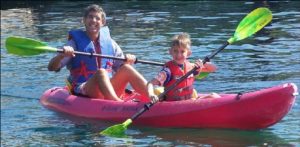
Kris Lall works as a product manager in the tech industry for an enterprise software manufacturer. As a youngster, Kris was consumed with soccer before technology came along. Now he’s consumed with both. You can find him on Twitter at the not-too-surprising handle @krisoccer.
My friend Cameron is an avid workout fan. Part of his weekly routine involves running at local parks near his residence. While we were discussing his exercise regimen, he mentioned that he always runs at the park on trails and not on cement or concrete because running on the harder surface causes more body soreness the next day.
I tend to run on the concrete sidewalks and roads in my neighborhood. So I’m interested in the longer term effects on the body of running on the more impactful surfaces.
I couldn’t find a study that definitively established that running on pavement is worse than running on other surfaces in the long-term; however, I did learn some key points in my research:
- Human bodies were “built” to absorb shock.
- Some believe that the type of running shoe doesn’t really matter, while others suggested trying a “spring” shoe.
- Various other factors play a part in determining an optimal surface upon which to run, like body type, weight, knee health, genetics (e.g., arthritis), running distance.
- Running technique can have an impact on the runner’s body, so have someone record you while running and then have an expert critique your running style in case there are ways to improve your technique.
- While asphalt is hard, it actually provides more “give” than concrete or cement.
- Try running on a variety of surface types and then note your soreness level in the following days.
I prefer running on streets because the risk of twisting an ankle is greater on a trail with potholes, roots, and other potential obstacles. Plus when you live in the city, streets are everywhere and parks or tracks with softer surfaces may not be as convenient to access.
Ultimately the jury is still out on the long-term effects of running on hard surfaces. Where I live it’s not as convenient for me to find a soft surface to run on. If you have any reservations about being injured while chasing pavements, maybe bike or hitch a ride to the closest track or park with a softer running surface and do your exercising there.
References:
https://www.runnersworld.com/uk/health/injury/a760152/top-10-running-surfaces/
https://www.painscience.com/articles/running-on-pavement-is-risky.php
https://www.quora.com/Will-I-hurt-my-knees-by-running-on-hard-surface-like-concrete-road
https://www.outsideonline.com/1784266/best-running-surface-your-knees
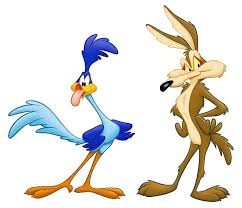
Calorie cycling approach to nutrition (Kris Kane)
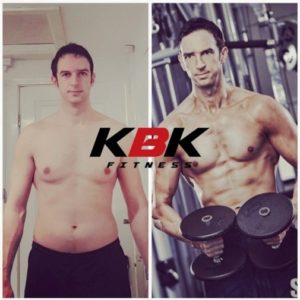
Kris Kane is a North Yorkshire based personal trainer, martial arts instructor and general fitness enthusiast. You can find him on Instagram at @koachedbykris and also view him professionally on LinkedIn at www.linkedin.com/in/kris-kane.
Hi everyone! Hope you have been keeping safe and well!
Tracking your food/drink intake is one of the best ways to ensure you’re consistently eating the right amount of calories for your fitness goals.
But for some people, tracking the same amount of calories… every single day… can get a wee-bit monotonous.
The good news?
You actually don’t have to eat the same number of calories every single day to succeed.
Similar to how your week-to-week weight average is more important than your day-to-day weight, your average weekly calorie intake is FAR MORE relevant than how many calories you’re eating on a single day.
Knowing this, there’s a whole load of ways to make your calorie deficit diet work for you.
In this graphic, I have 3 different ways you can manipulate your weekly calories.
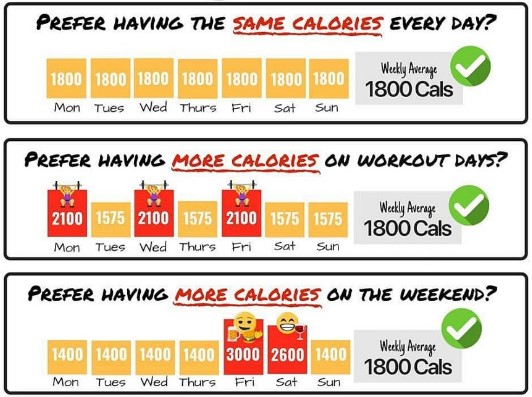
None are better or worse than the others…
It’s all about what works best for YOU and YOUR lifestyle.
When I’m tracking, I like to eat (roughly) the same number of calories each day…
But I have clients who prefer cycling their calories based on when they work out.
I also have clients who cycle their calories to accommodate their weekend partying!
The Bottom Line: Success comes from finding something you enjoy.
More enjoyment = more consistency.
While there’s nothing magical about calorie cycling, it can be an excellent tool for creating a more enjoyable plan!
In the UK we are getting closer to the gym’s opening back up which will be exciting to finally get back to lifting weights again!
If you are at a loss as to where to start with your gym training and want some guidance, I have a “back to the gym” workout guide with a selection of workouts for you to go in focused with a plan in mind 🙂
Just drop me an e-mail at [email protected] or via my Facebook page where I will be posting more tips on training, nutrition and mindset: https://www.facebook.com/kbkfitness/
As always, good luck with your training and let me know if you have any questions.
Stay safe!
Kris.
Progress after a pandemic (Lana Khazari)
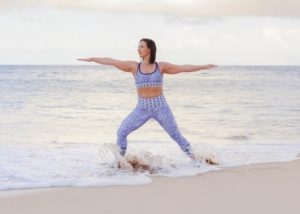
Lana Khazari is a Technical Support Analyst for the Corporation of City of Windsor, Ontario, Canada. She is also a Precision Nutrition Coach, Personal Trainer, Fitness Instructor and a Yoga 200-RYT Instructor. You can find her online at lanakharazi.com.
2020, uggh.
For previous gym-goers, unracked plates and cluttered dumbbells seem completely bearable now. Go ahead gym dude, do your bicep curls in the squat rack! I don’t even mind. I’ll be here on the leg press. Oh, how I miss you leg press!
For the people who sweat all over a piece of equipment and don’t wipe it down, that is not only a huge pet-peeve of mine but a bigger problem. Until we are confident that the gyms reopen safely, this thought alone is enough to keep me away.
Lockdown has taught me how effective and affordable it can be to work out at home. The convenience is unmatched. I don’t have to pack for the gym, drive to the gym, or even shower at the gym. My new gym is open 24/7. And although working from home has its ups and downs, this means I can train right before work, on my lunch, or after work with access to top-notch shower facilities. So, why am I not training and training less than I was before? It seems I’ve lost complete motivation. And every day I feel a bit more guilty that I can’t do something that came so naturally to me before.
If I tell you “don’t think about elephants”, what do you think about? Most certainly elephants! Because when I tell you not to do something, the mind is like a rebellious kid and does it anyway. The same things happen for thoughts, feelings, and the desire for action. The more we avoid thoughts, feelings, and urges we don’t like, the stronger they become.
So for me, the more I think about how I’m not doing workouts, the more I don’t do them. Instead, I will find something else to do or find any other excuse, so I feel less bad about it. Maybe one of those excuses is that I can’t get as good of a workout at home.
Our human instinct is to regress when we are confronted with things we don’t like. It’s way easier to hide and to make ourselves feel better by doing more simple things. Like hiding behind a mobile device scrolling through a Facebook feed. I’ve done that plenty of times. This follows the natural human instinct to escape or avoid, except for the problem with that is it makes things worse. And the more you avoid, the worse it gets. My coach uses a brilliant phrase, “what you think about expands”. The more I avoid thinking about the elephant, the bigger the elephant gets. The bigger the elephant gets, the harder it is to start. When this happens, I will continue to do the things that will help me forget about it. Avoidance approaches create more anxiety over time.
We almost always have stuff we would rather not think about but this could be holding you back from your progress.
Some example stuff that could be holding you back from prioritizing your fitness and health:
- Getting extra stuff done for work
- An extra cookie or an extra drink here or there, ’cause balance
- Skipping all or parts of workouts because it is too hot, too hard, or you just don’t feel like doing it
- Having “pizza for the kids” or “treats for the kids”
- Having every food offered up by family or friends
- Taking care of anyone else’s stuff before your own
The first thing you need to do here is stop and look at the big elephant in the room. Don’t run or hide, but stare that jerk in the face. Your instincts will tell you to not look at him. And maybe right now you can only look at his leg. That’s ok, just start somewhere, start little, it counts.
So, I decided to stop and look at my elephant.
Here’s me staring at the elephant:
- Do I really need to work late every night? No, Lana, but you could schedule a workout instead.
- Do you really need that extra glass of wine with your friends on the weekend? No, Lana, it’s been a tough go but you could be happy with one
- Do you really need that extra snack at 3 pm when you realize your to-do list just got 10x bigger? No, Lana, but how about a nice piece of fruit in place if you are actually hungry
- Do you really need to stay up late every night? No, Lana, you could try getting to bed ½ hr earlier by setting a phone alarm and maybe even eventually getting up earlier for training!
- Do you really need to eat Aunt Miriam’s carrot cake? No Lana, a polite “no thank-you” or “I don’t eat carrot cake” would work too
The truth sucks. I like doing all those things. But, if I want to succeed with my goals I need to honestly look at how I’m holding myself back.
If you need to reboot your commitment after this first-half disaster of a year, stop, look, and think of what’s holding you back. Ask yourself:
- What is the elephant I’m avoiding?
- What small itsy-bitsy thing can I do to confront this beast today?
This will help improve your resolve to complete a task and commit to your success. As the wise Abraham Lincoln once said – “Always bear in mind that your own resolution to succeed is more important than any other thing”
Diet doesn’t have to be “all-or-nothing” (Sarah Trammell)

Sarah Trammell is an application analyst at a university in Georgia. She became interested in health and fitness issues when she began making diet and lifestyle changes to lose weight back in 2007 and learned even more when trying to track down what to do about other health issues beginning in 2011 with not much input from doctors. You may follow her blog at ihatemyglutenfreelife.com.
Eating a healthy diet doesn’t mean giving up all of your favorite treats and comfort foods for what some would call “rabbit food”. You can eat healthy and nutritious foods from all kinds of food groups and have an occasional treat as well. Food should nourish but should also be enjoyable. Eating a healthy diet should include a wide variety of whole foods along with the occasional treat.
Many of you may have seen this graphic, an example of which can be found here. It seems to be telling you that you have only two choices, to go all-out on junk food or just eat green plants (with the occasional blueberry) for the rest of your life. The graphic depicts two very extreme choices, neither of which is healthy. It doesn’t illustrate any kind of middle ground where a person can choose a wide variety of healthy foods and treats. It only suggests “all-or-nothing” in either direction.
I could argue that the choice on the right is just as unhealthy as the choice on the left. There are so many healthy foods missing from that side of the graphic. There are no depictions of meat, dairy, eggs, or fish, all highly nutritious foods. Healthy oils and fats are missing. Whole grains are also missing. While they’ve gotten a bad reputation in recent years, they can definitely be part of a healthy diet if you can tolerate them. I have a wheat allergy, so I have to avoid anything containing wheat, but I eat foods like barley, rye, corn, rice, and oats. These are great additions to any meal. Also, fruits and vegetables that are orange in color are very high in beta carotene, which converts to vitamin A in the body. Other fruits and vegetables that are not green are also very nutritious. Other nutritious plant foods like tubers, nuts, seeds, and legumes are also missing. It would be very hard to create a healthy diet without many of these foods. Animal foods are very high in certain nutrients like vitamin B12 and zinc. Nuts, seeds, and legumes are great sources of copper. Fish is a great source of omega-3 fatty acids. There are many more examples in addition to these.
I could also argue that including foods from the left side of the graphic in your diet can be healthy as long as it’s done in moderation. A healthy diet should consist mostly of whole plant and animal foods, but there’s absolutely nothing wrong with a fast food hamburger, french fries, pizza, cookies, cake, candy, soda, or ice cream if you can tolerate them and enjoy them only occasionally. These foods symbolize fun and enjoyment and are normally a big part of social gatherings and activities such as watching movies. These foods are also overly demonized by many who think they know better than the rest of us concerning what’s healthy and what’s not. People should never feel guilty about indulging in a favorite treat if the rest of their diet and lifestyle is healthy.
Diet should be about eating nutritious foods to maintain the health of your body as well as enjoying fun treats. It should never be about choosing an extreme that would leave you unhealthy and miserable. The graphic should have a third fork, one with a wide variety of healthy foods with a sprinkling of enjoyable treats. I would definitely take that fork in the road!
Send us your feedback!
Got feedback about anything in this issue of FitITproNews? Email us at [email protected] today!
The Toolbox
The Old Reader is an RSS newsreader that give you the best signal to noise ratio on the web:
You can use the WSUS_Cleanup_CL.exe tool to do the cleanup tasks of your WSUS database:
https://audministrator.wordpress.com/2016/02/10/windows-wsus-database-cleanup-tool/
System Center 2012 Configuration Manager Support Center helps you to gather information about System Center 2012 Configuration Manager clients so that you can more easily address issues:
https://www.microsoft.com/en-us/download/details.aspx?id=42645